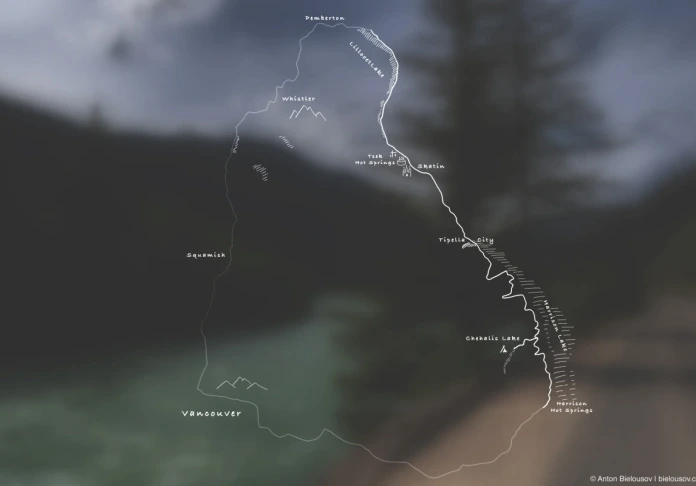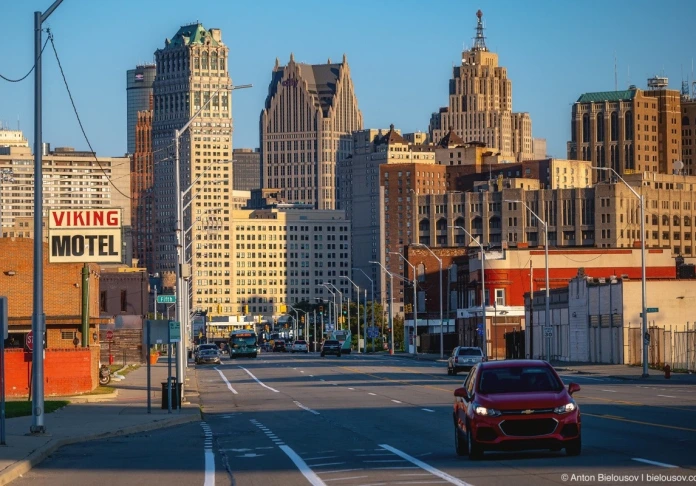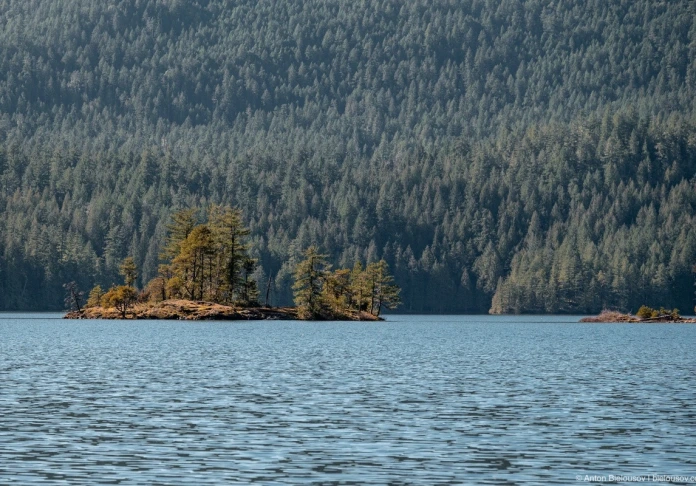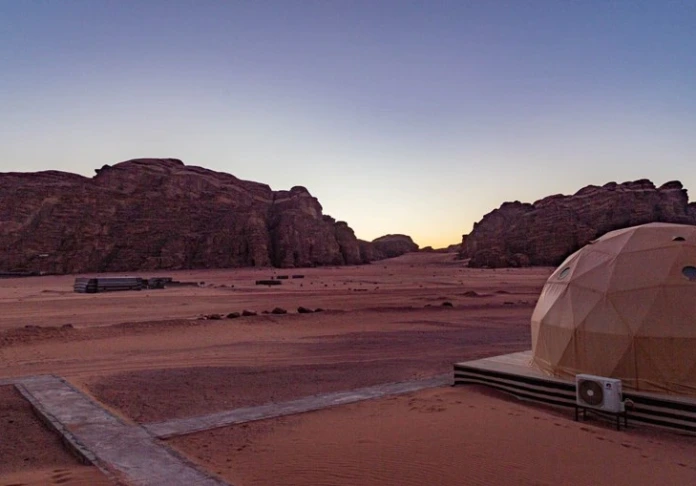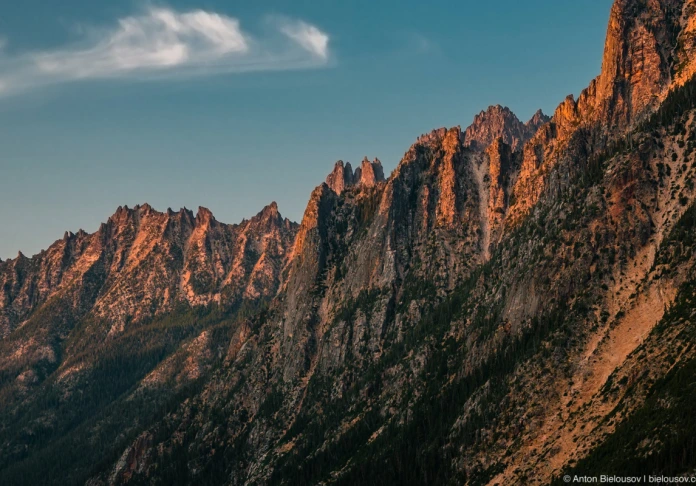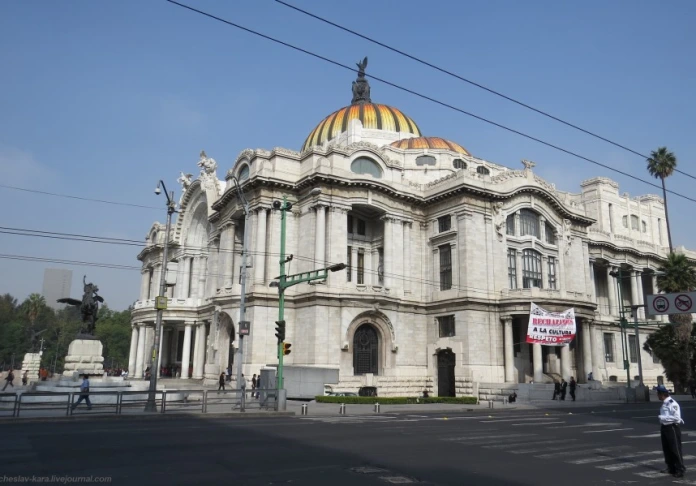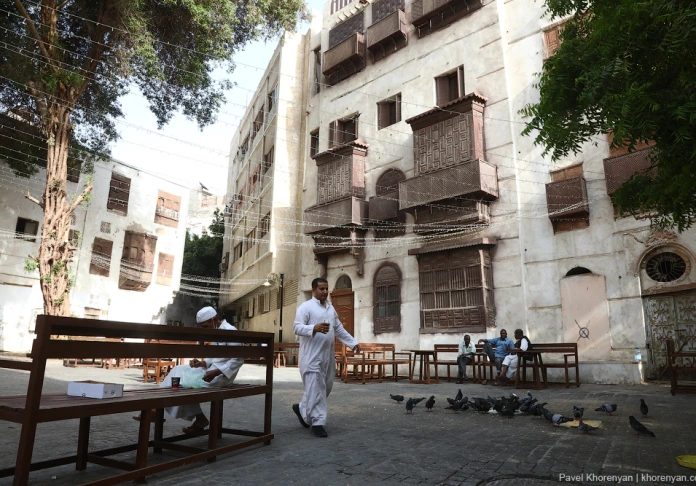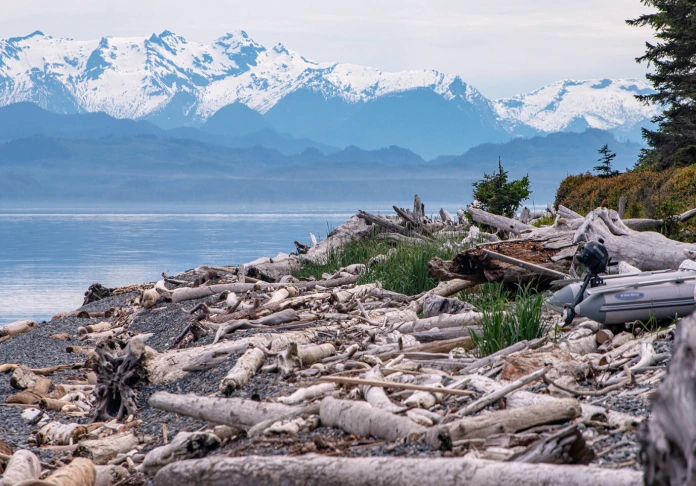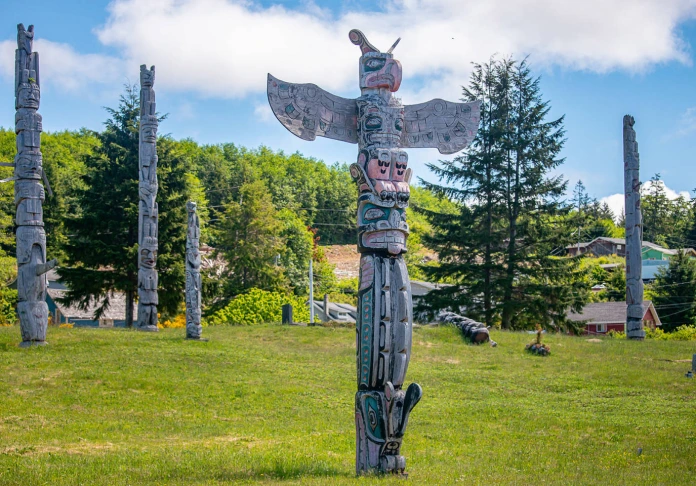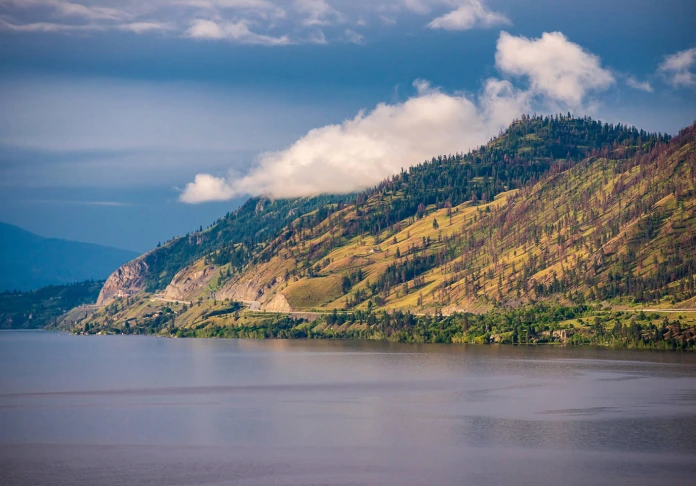Road Manali - Le
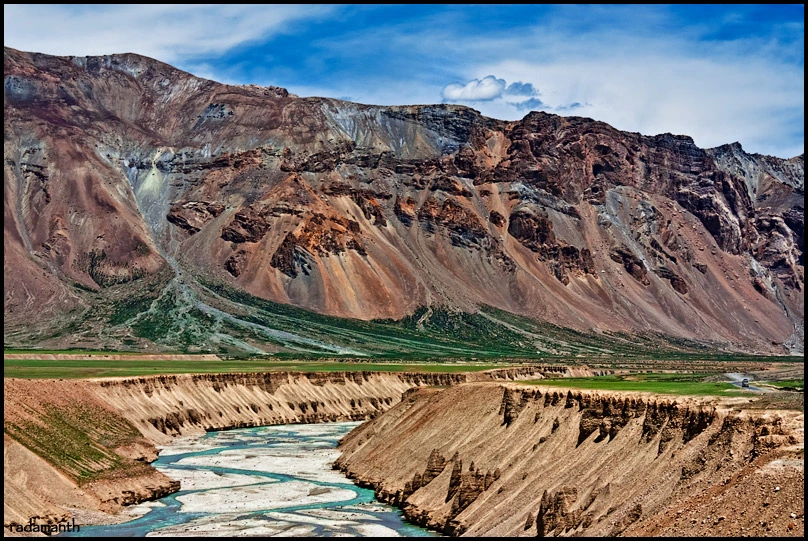
Road Manali - Le - it's almost the same cultural and geographical meme, as Rudyard Kipling's The Road to Mandalay. 480 kilometers between green Himachal with its pine forests and a veil of clouds, fog and high desert alien Small Tibet. 480 kilometers of trails military NH21, which almost anyone, even accidentally, and offhand shot picture looks like the wallpaper on your desktop or an illustration from National Geographic. I feel a little sorry for those who, for cowardice or for some far-fetched prefers to lack of time for more than an hour to get to Le by plane from Delhi. Moving to Ladakh on the ground - is in some sense the travel initiation, akin to conquer some eight-and a kind of psychological distinction between the concepts of "tourist" and "traveler". Unbearable beauty of this road is comparable only to that of unbearable agonizing ride on it: someone who will stand for 18 hours on a narrow seat Mini Bus, without food or sleep, with alternating sky-high Himalayan passes and sand plains Moore, all other travel-flights seem providing easy walk . In any case, this track - unquestionable bidder to participate in such a favorite glossy magazines ratings of "100 things that you should do in a lifetime."
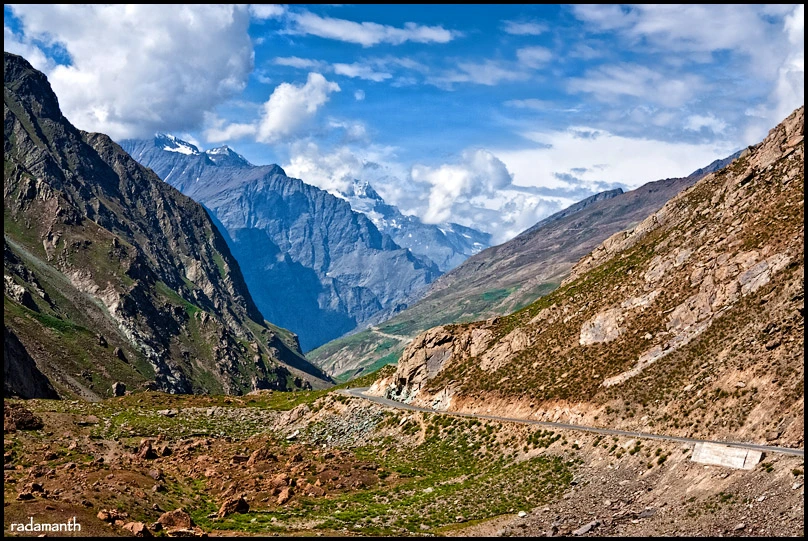
Until relatively recently, the way Manali - Le takes two days, 10 hours a day, overnight or in Keylong Sarchu. But then, as the Indian Army has transformed this ancient caravan route from Tibet to India in more or less decent highway, someone rightly decided that the best otmuchatsya 18 hours straight without stretching fun for two days. However, only in the good summer weather and sleep this way the driver will take only 18 hours. In the case of an avalanche or landslide journey stretched for several days, and in the case of dozing driver - even forever.
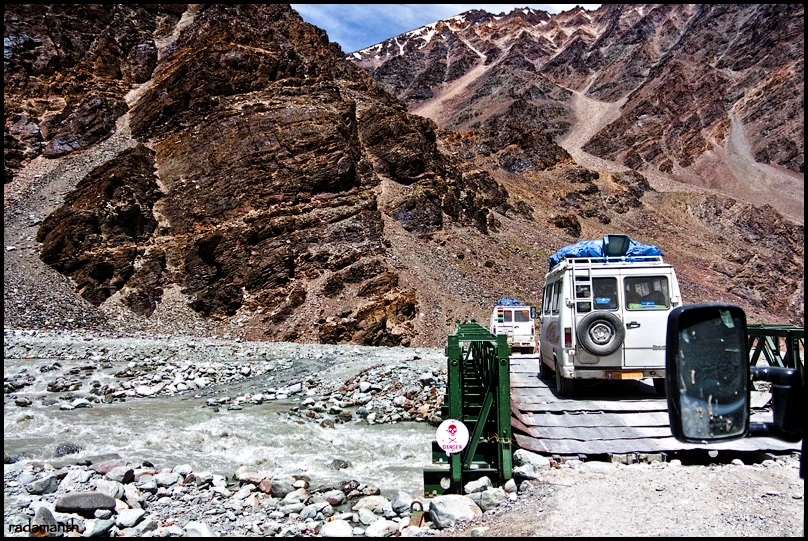
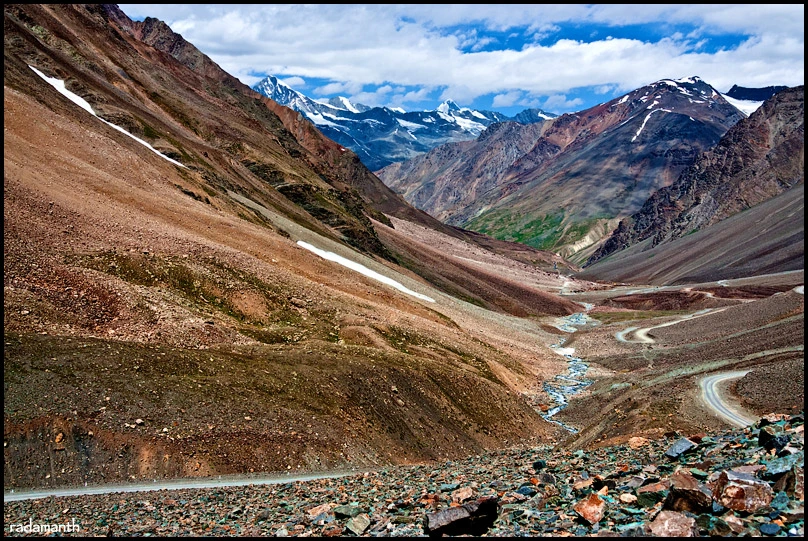
From Manali convoy of six buses out two in the morning. A couple of hours until the bus speeding down himachalskim forests - the only way to take a nap undisturbed. At four in the morning Mini Bus starts to climb the serpentine Mount Corpses - Rohtang Pass La separating the lower Himalayas from barren highlands valleys Lahol and Spiti. Night climb to the Rohtang resembles an airplane taking off, stretched out in a sleepy somnabulicheski-slo-mo for all eternity: first goes below the glow of lights Palchana, then bus pierces several layers of clouds, perfectly flat surface measuring cups height, and finally, there is only turtle movement somewhere between earth and heaven, the strobe flashes of beam colliding truckers. Those who went to the old Le, two days, could enjoy the views from the Rohtang midday and make sacred treatment-bark around stupas and ligaments-checkboxes lungta. 18-hour route does not involve such sentiments; on the pass himachalsky driver arias replaced by the Mongoloid Ladakis, and in the predawn darkness bus passes without stopping by Keylong and Darchia. First stop - at 6 am at the thrash dhaba menu which consists exclusively of beach-bags and instant coffee. Some irresponsible person pounce on this food Indian truckers like not eating for several days; accidents still do not know what lies ahead :) dhaba:
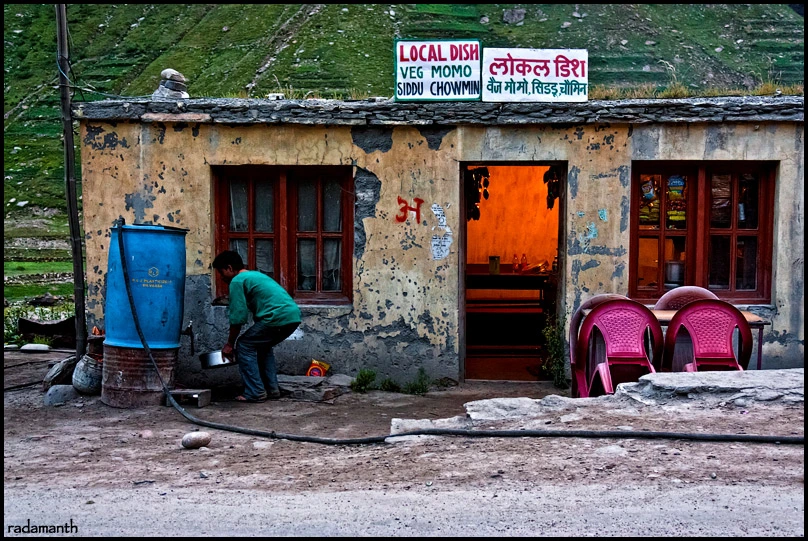
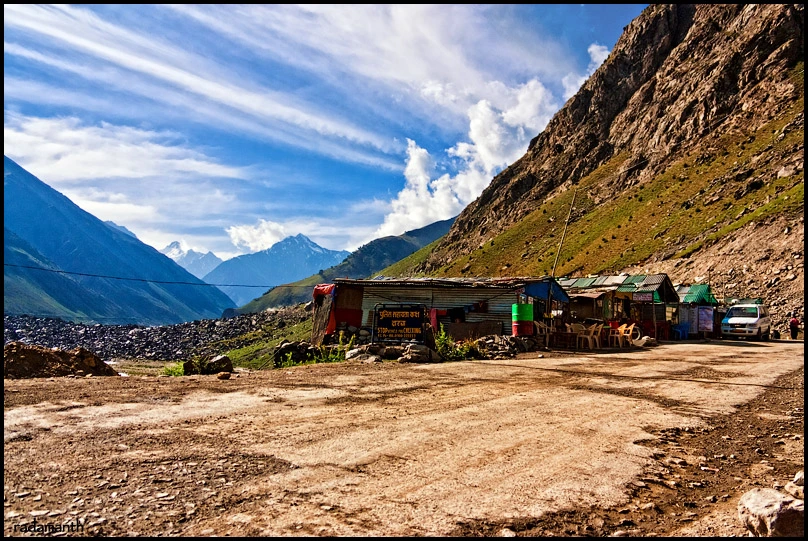
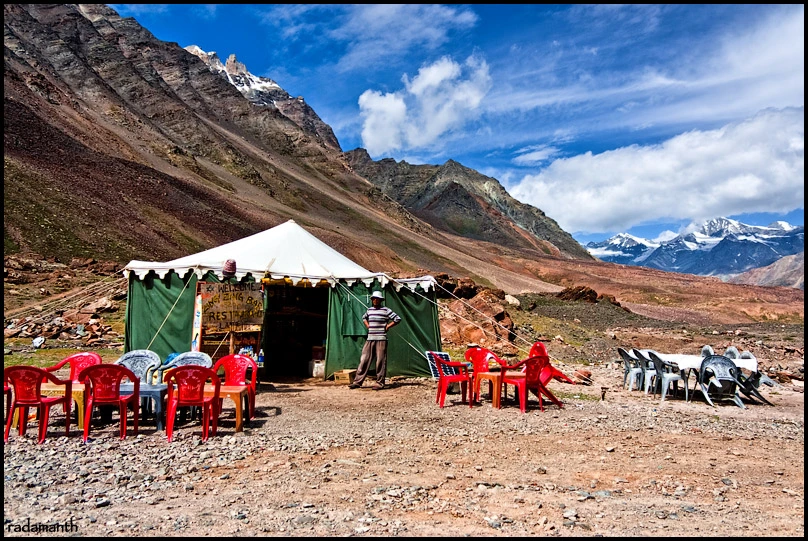
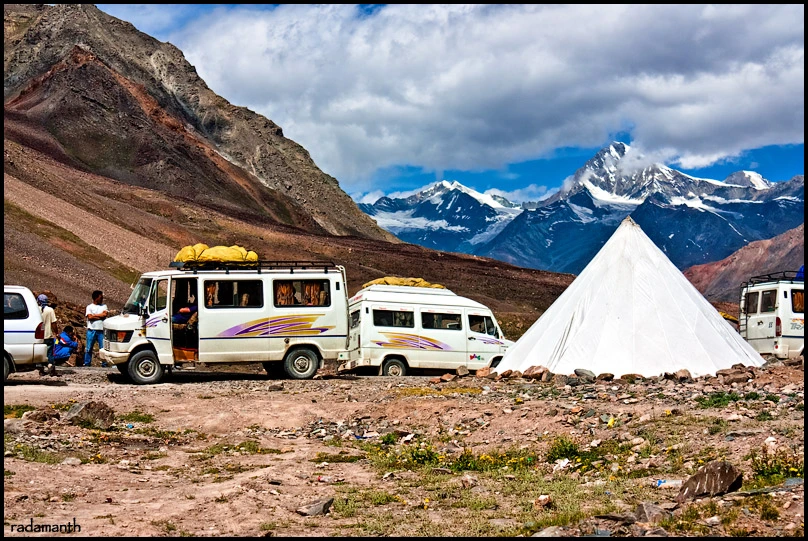
At dawn on the bus rushes intricate serpentine ridge Pir Panjal; this is where the very start, real, postcard-poster Himalayas, with snow-capped mountain peaks and the beds of dried rivers, the kingdom of rock and ice. One of the most amazing experiences of the height at more than 3 kilometers - poignant, fotoshopnye blue skies; in the lowlands of these colors never happens, even in the most clear cloudless day. Each half or two hours - a short stop at the dhaba. There are already felt the first symptoms of altitude sickness, unusual, but at first even pleasant: light-headed, almost palpable euphoria from oxygen starvation and transcendent landscapes.
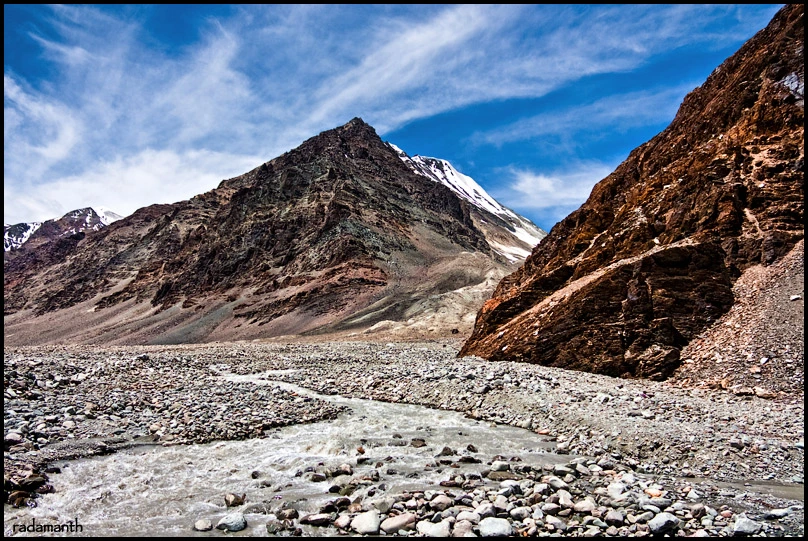
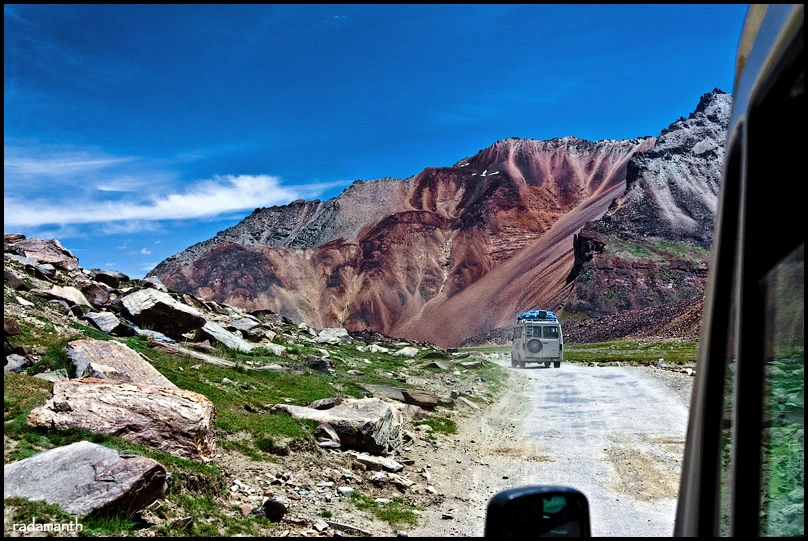
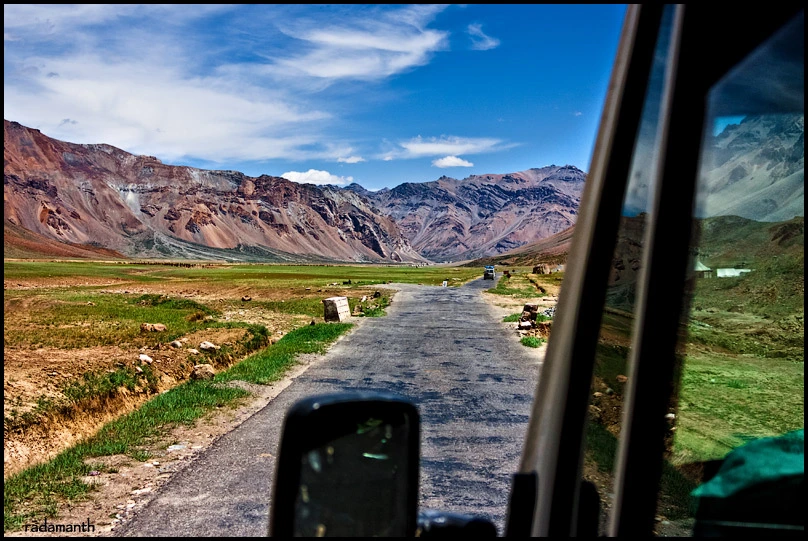
By noon the column comes to Sarchu - a few dozen white military tents in a small valley with a low-ceilinged stunted grass. For Sarchu begins chief Highlight all the way - plain Mor with its phantasmagoric landscape and erosion gigantic columns. That is the plain Moore begins the most monstrous plot all the way when the surreal rocks give way to the desert. The roads are not, there is only the direction, with the relief of the washboard. Here, the column drivers arrange a competition between those who make it to the first pass Taglang La vtaplivayut and up to 150 km / h. Those who ate in the morning dhaba Doshirak, together sblevyvayut contents of these beach-bags. And those who could withstand the desert Mor finally finishes Taglang La. Sarchu:
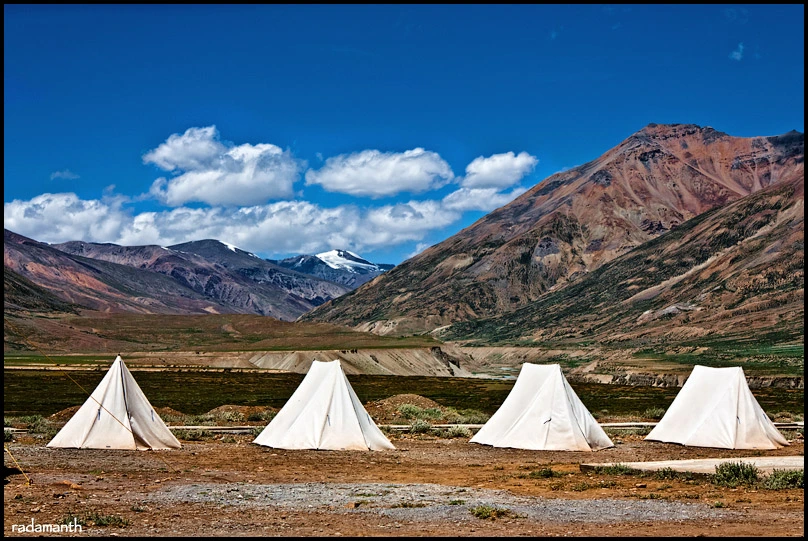
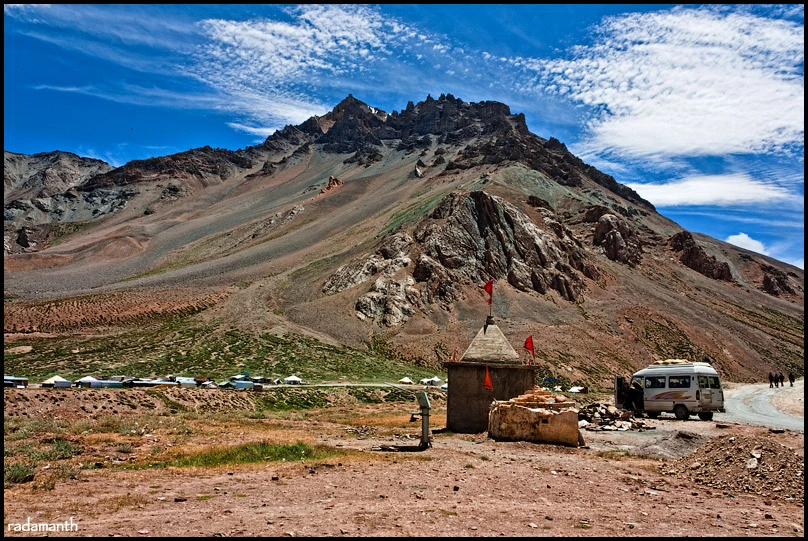
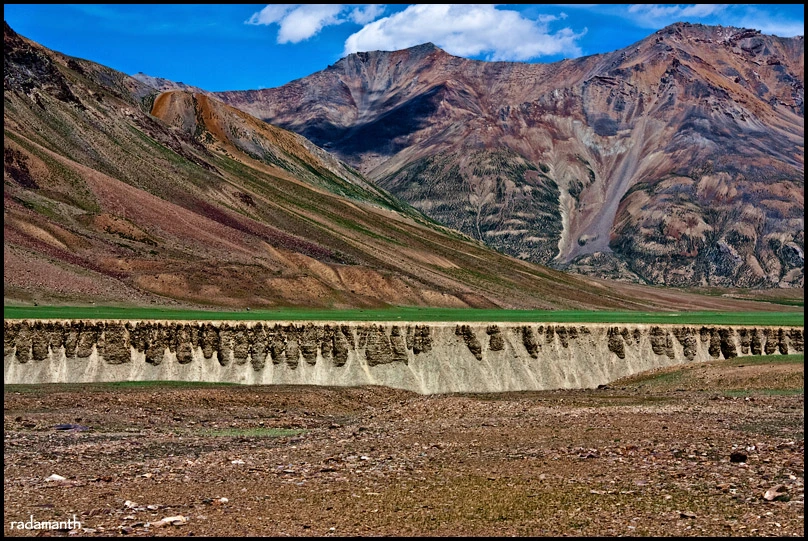
Mohr plane
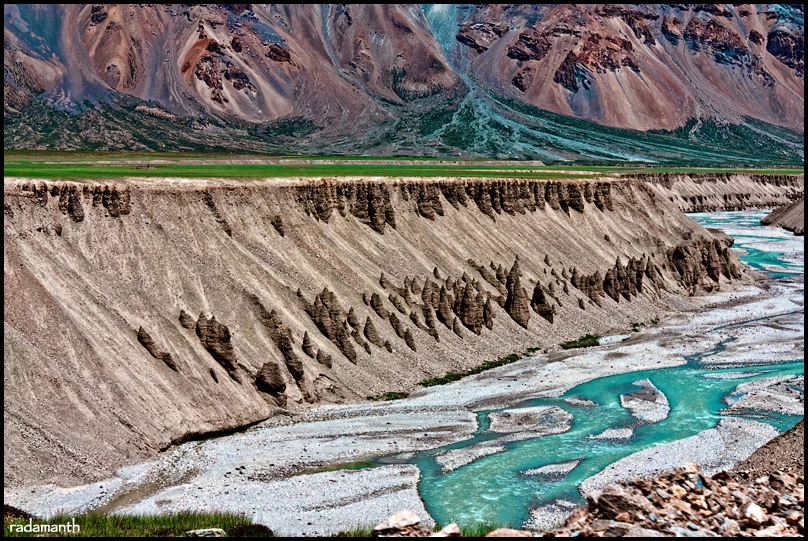
These columns erosion occurring throughout Ladakh, have approximately the same origin as the rocky outcrops Arizona Monument Valley
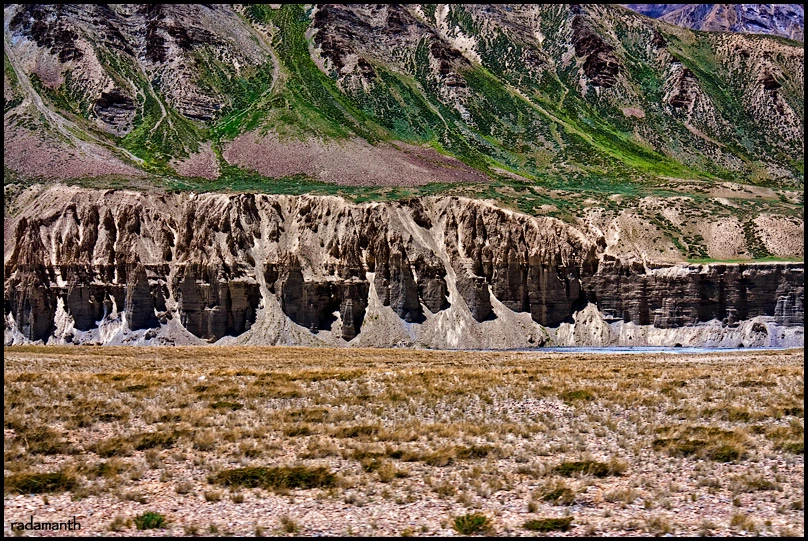
Each column - 20-30 meters in height
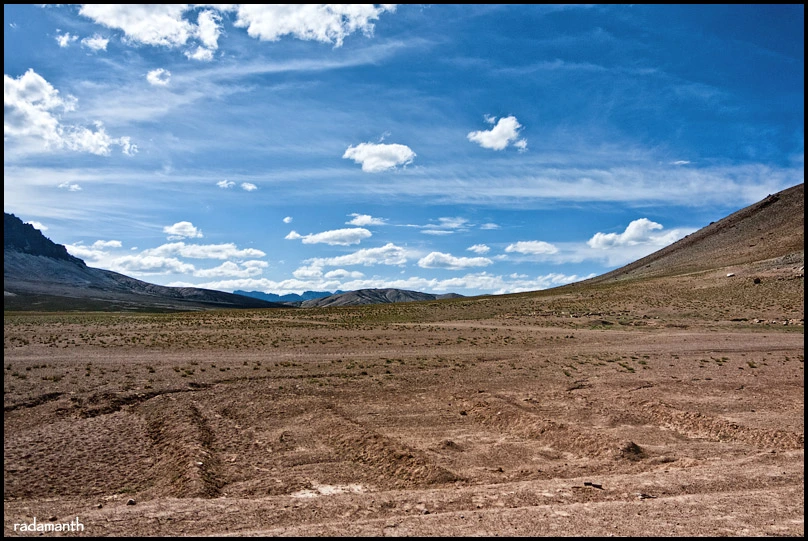
This road - the most unpleasant land throughout the 480-kilometer route, this pass - the last and highest point of the track, 5300 meters above sea level - is just 200 meters below Everest Base Camp. Here it becomes quite remarkable: passing ten meters, you feel as if taking a few laps, dizziness from hypoxia ubayukivayusche shakes the surrounding mountains. Very few people find the strength to even get off the bus; in a comatose state of suspended animation are the last five hour drive to Le, when, down from La Taglang, long bus winds through a narrow corridor on the way to the gorge Ladakskuyu valley. Ladakh, as seen from the bus window at sunset the sun - a kaleidoscope of military bases, the Buddhist gompas on a cliff top and neat manicured villages with blocks of the same type of Tibetan houses. The first impression in this case turns out to be the most faithful - gompa-military-pastoral in the middle of a dusty high desert framed by mountains - that really is the Ladakh.
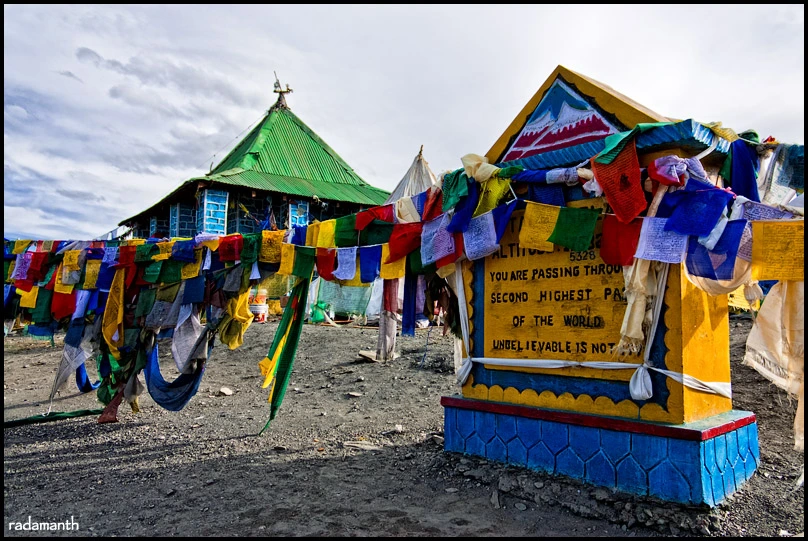
La Taglang
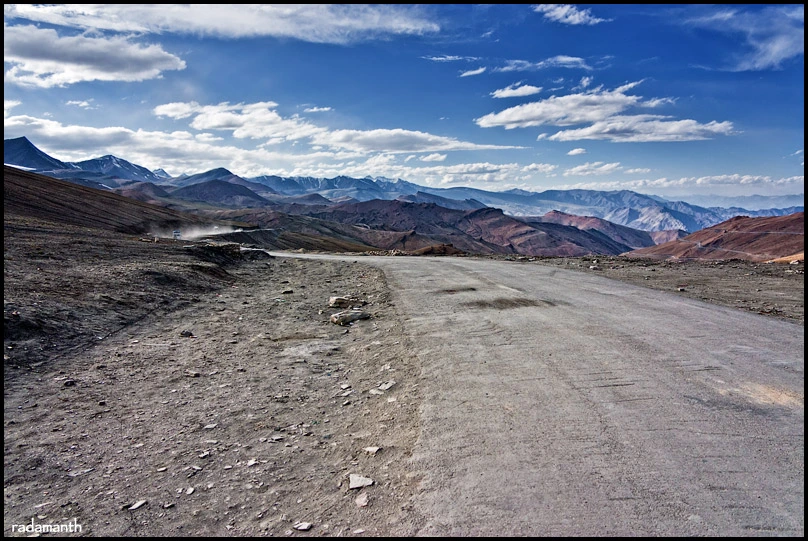
The road to the pass of Le Taglang La

